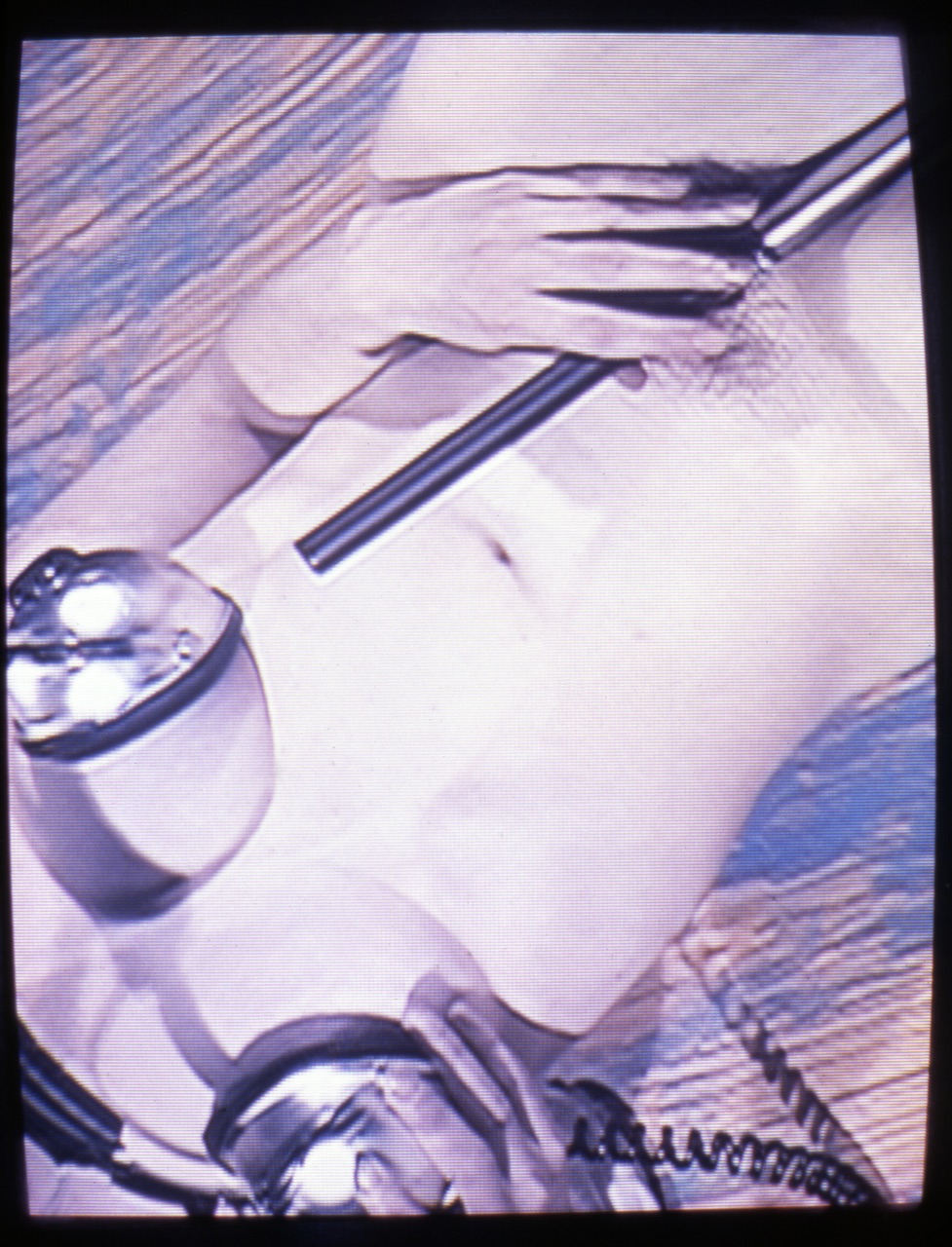Desire Control, 1981
single channel video; 12 minutes; colour, mono
Artist’s Statement
Desire Control presupposes that pornography is an expression of sexuality and as such can actualize female sexuality not inevitably victimize it. With artificial and stylized sets, text, and mannerisms, the tape isolates specific expressions of desire found in popular music and porn magazines, together with a conversation between a porn director and her admirer. Technology is presented as a sexual fetish.
“Her video Desire Control entered the 1980s feminist debate over the representation of women’s bodies and expression of sexuality. Screened alongside the anti-pornography film Not A Love Story (1982), Chitty’s video countered dominant feminist discourse and became an object of censure. As the woman porn director in Desire Control states, “Technology exists only to fulfill our desires.” Chitty, like many other women, used video to assert her conviction that women could claim authorship of their bodies as sexual subjects.”
– Anderson, H. 2006. in K. Scott & J. Shaughnessy (eds). Art Metropole The Top 100. National Gallery of Canada. 60
Screenings
Western Front (Vancouver), 1981; Winnipeg Video Forum ’81; Banff Centre for the Arts, 1982; Art Metropole (Toronto), 1982; Canadian Images: a new look (Peterborough), 1982; T.V. or Not T.V. (Montreal), 1985; Art Metropole: The Top 100, National Gallery of Canada touring exhibition 2006-7
Written by Elizabeth Chitty (except for Video Diversions)
Cast: Margaret Dragu, Eric Metcalfe, Jeanette Reinhardt
Voice-overs: Elizabeth Chitty
Audio Recording: Howard Broomfield, Patrick Ready
Set-painter: Hugh Poole
Contributors: Michael Brodie, Kate Craig, Jane Ellison, Stokely Seip
Produced at Western Front Video
Post-production: Western Front Video, Gastown Productions, Video Inn
Collection:
Art Metropole Collection, National Gallery of Canada



